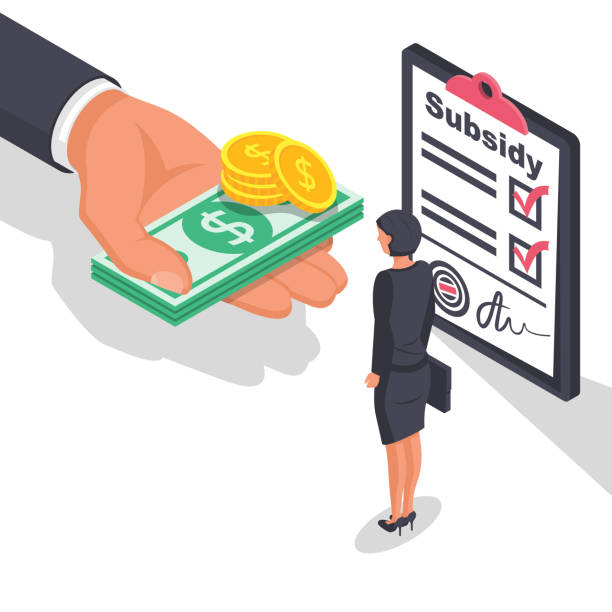Abstract
It is aptly said that Subsidies should never be a permanent feature of any market. They should be introduced only to address market failure and they should be withdrawn gradually as those distortions in the market are addressed and any mismatch among these makes subsides a controversial topic due to several reasons like distorting trade and competition, futile use of funds but we can not ignore its positive aspects which promote welfare, innovation and research. Keeping these themes in mind, this paper ‘Subsidies and Industrial Competitiveness’ further discusses the impact and progress of incentives and their drawbacks along with the regulations by international organisations. The paper tries to cover various aspects related to the subsidies be it political agenda, growth process, welfare of the nation or any other economic strategy concerned. It lists the drawbacks and the challenges faced by the subsidy-related schemes which hamper the growth process and burden the government with so many subsidy-related payments that distort the whole fiscal consolidation objective of the government.
Subsidies play a crucial role in a country like India as a support to small and medium enterprises and such practices go a long way in reducing unemployment figures which is the need for the country so that it stands up to the expectations of the mass population. Thus, to fulfil these objectives, it puts a strain on the public finances. For instance, the government is sponsoring a subsidy to a company manufacturing microns to be set up in Gujarat for assembling and testing chips. The budget of the project is equal to a quarter of India’s budget used for higher education. This reflects the large monetary support that the government provides for the development.
To maximise the benefits, a proper balance between welfare and development needs to be achieved.
Methodology
The study employed the qualitative research technique and the data has been collected from various sites such as the International Monetary Fund, World Trade Organisation, interviews with ministers and newspaper articles. After mentioning the methodology used, the paper proceeds to introduce the subsidies and various other components related to that such as types, advantages, drawbacks, etc.
Introduction
Subsidies are the incentives given by the government to boost the production or exports of a particular sector and as a welfare scheme in case of food subsidies, education and rebates for people below the poverty line. Subsidies are used to correct the imperfections in the market and to attain the social welfare goals that are often overlooked by private players in the market. These days subsidies are also offered for promoting innovation and research-related tasks such as in the case of artificial intelligence and electric vehicles. But doling out subsidies by the government is often related to the coming up of elections and is becoming synonymous with gaining votes.
But subsidies if given with a proper objective and for a prospering sector can do wonders and can have a multiplier effect. These promote industrial competitiveness, bring innovation in the sectors and help industries create their global presence and expand their business worldwide. Subsidies also support incoming foreign direct investment in the nation which boosts the economic growth of the country.
Why do Governments use subsidies?
The government uses subsidies as a tool for increasing welfare and boosting economic activity in the nation as the government chooses a targeted segment of sectors for which various initiatives are taken. For instance, the Government of India came up with Production incentive schemes for boosting the manufacturing sector and the concessions in tax given to Special Economic Zones set up across the country help these sectors to grow which further contributes to the growth numbers of the country. These schemes are mainly pushed for achieving national strategic goals or gaining some international competitive advantage but it needs to be observed that not every time this decision is consciously taken as many times it can be either backed by vote bank politics which has become more famous as freebies or inexperience reflection of the ministers in handling fiscal payouts.
How subsidies impact business – Producers benefit vs. consumer
Subsidies help both producers and consumers in certain ways.
From the consumer point of view, they enjoy lower prices when the producer gets a subsidy from the government. So the price charged before the subsidy and after the subsidy becomes the consumer benefit. This directly leads to the consumer surplus and causes the demand expansion which is then dependent on the scale of the subsidy and price elasticity of the demand. Subsidies given for LPG connections come under this umbrella.
Producers prefer subsidies as financial support given by the government will generate extra profit and therefore improve the incentive to supply for the producer. He gets the market price in addition to the subsidy. They get a higher level of producer surplus and increased revenue. The producer benefit is the producer surplus earned before the subsidy compared with the producer surplus achieved after the subsidy. Incentives given to special economic zones can be cited as subsidies for producers.
Click Here To Download The Paper


📌Analysis of Bills and Acts
📌 Summary of Reports from Government Agencies
📌 Analysis of Election Manifestos

